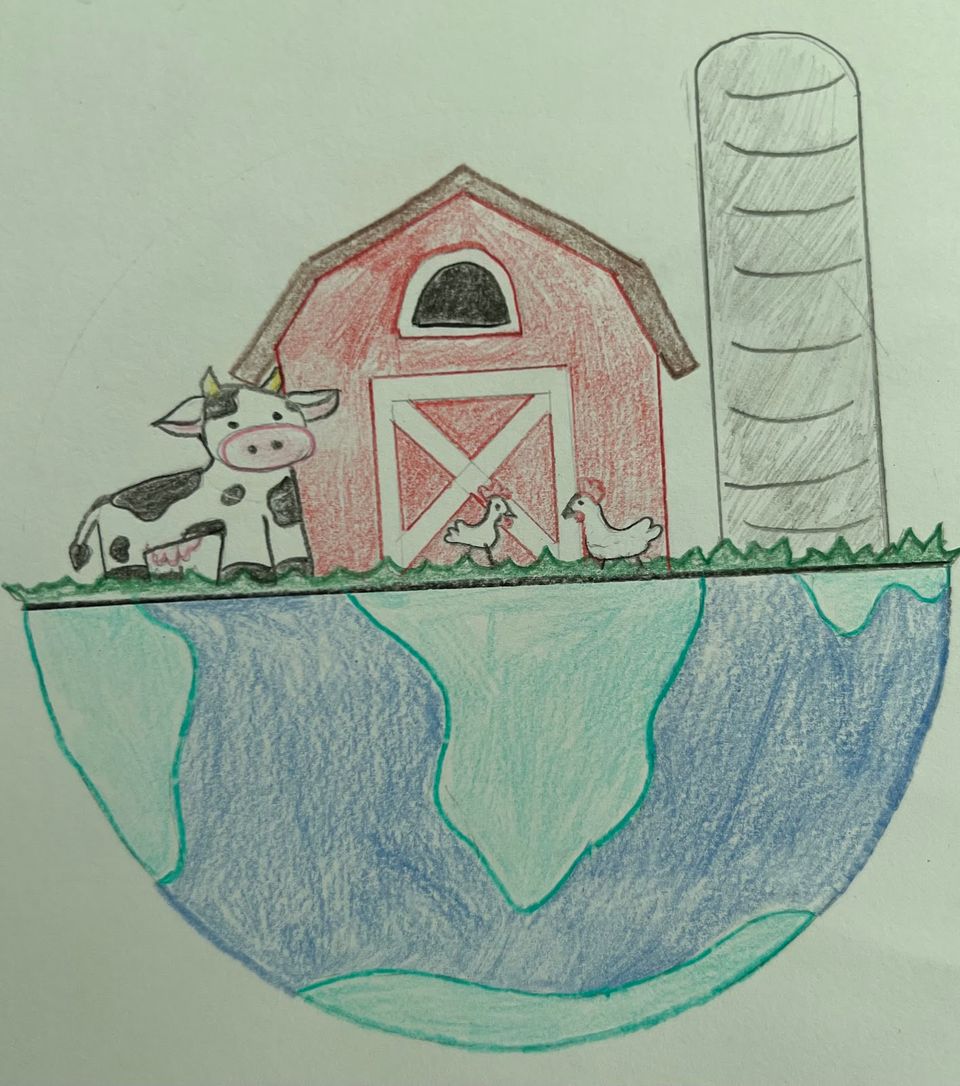Agriculture and the Environment: Feeding the World Without Destroying it.

If you had to pick, would you rather die of starvation, or would you rather die due to harsh environmental conditions? Tough decision, isn’t it? Food and a safe environment is necessary for our survival. If either of them were to vanish we would go extinct. However, even in the process of getting food we are harming our environment
Where does our food come from?
The majority of our food comes from agriculture. Agriculture is defined as the growing of crops and raising of livestock. You may be wondering, how does agriculture affect the environment? Agriculture doesn’t seem like the kind of thing that would be harming our environment. But, agriculture is actually among the greatest contributors to global warming. Can you believe that agriculture emits more greenhouse gases than all the cars, trains and aeroplanes combined?
How does agriculture affect our environment?
As I mentioned before, agriculture is a major contributor to global warming. This is mainly because of the methane which is released by cattle and rice farms and the nitrous oxide released from fertilized fields. Multiple rainforests have to be cut to make space for farms, and because of this, there is more carbon dioxide in the atmosphere. Methane, nitrous oxide and carbon dioxide are all greenhouse gases which contribute to global warming. Because of global warming, glaciers and ice sheets are melting, and the areas where a plant or an animal is found is shifting.
Other than being a major contributor to global warming, agriculture is the main source of pollution in some countries. Tools that are used in agriculture, such as pesticides and fertilizers, can be harmful to the environment and us by causing pollution, such as water pollution. These pesticides and fertilizers can contaminate water and soil, which can harm us. Most of these pesticides and fertilizers aren’t biodegradable, which means they are going to pollute the environment, and they’ll last a really long time. These pesticides and fertilizers can also enter the food chain harming animals. Imagine those poor animals facing problems they had nothing to do with.
The way we should take action
Seeing this as a serious issue, we should do our part when doing agriculture to try and reduce environmental damage, but seeing as we can’t cut out doing agriculture entirely (because then we’ll die of starvation), we have to minimize the damage from agriculture as much as possible.
As we know, agriculture can be divided into 2 parts: The raising of livestock and the growing of crops. To minimize the impact of the raising of livestock, there are two main possible solutions. One is beyond meat. This is plant-based meat which tastes like meat but is plant-based. The other solution is lab-grown meat. This is meat that is grown from the cells of animals. The reason why these are solutions is because it relies on smaller space, it’s cheap, and it doesn’t require the raising of livestock, which will reduce the greenhouse gasses emitted from agriculture by a lot. On a positive note, it’s also animal cruelty-free.
To minimize the impact of growing crops, modern technology is very helpful. This is because modern technology can increase the yield of crops, make fertilizer usage efficient and minimize the use of water. Some examples are hydroponics and vertical farming.
We can also make individual decisions that will help our environment, such as reducing our own food waste. The annual food wastage for the whole planet is 2.5 billion tonnes! Can you imagine all the food that is being wasted each year! We can also support companies that use environmentally friendly solutions to produce food through agriculture.
Conclusion
Doing environmentally-friendly agriculture may not be easy when agriculture practically feeds the entire human population, but a healthy environment is also necessary for our survival.
Reference:
- nifa.usda.gov
- nationalgeographic.com , education.nationalgeographic.org
- world wildlife.org
Author Biography
Sarah Saamee Mohamed is a 13 year old studying at Billabong International School in the 7th grade. Her hobbies include reading and playing tennis. Sarah aspires to be like her mother, who works in finance.
Cite this article as:
Sarah Saamee Mohamed, Pollution: Agriculture and the environment: Feeding the world without destroying it, theCircle Composition, Volume 4, (2023). Agriculture and the Environment: Feeding the World Without Destroying it. - theCircle Composition
